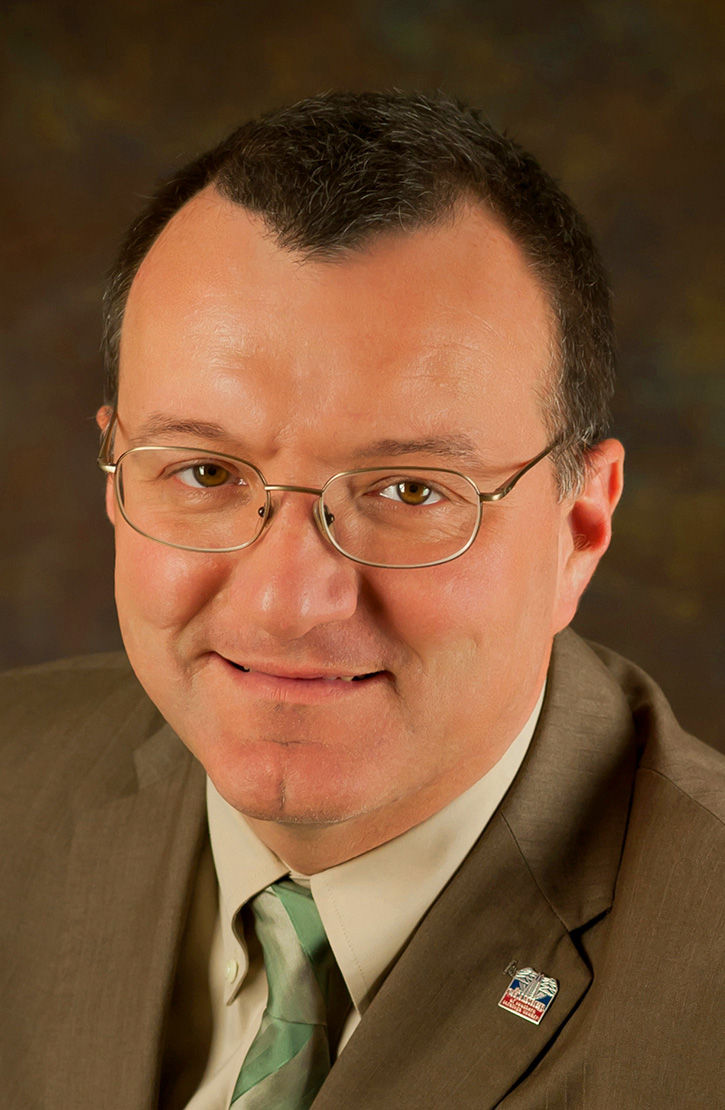
BY PETE BARDUNIAS
The year 2014 taught us some interesting
lessons. Businesses with the resources were
probably aggressive, investing in a relatively
strong Tech Valley economy.
However, if finances were tight, many
independent businesses appeared timid and
careful about what to do next. Our challenge
as a business community is to support both
groups. The Affordable Care Act had an impact,
at least early in the year, before businesses
became comfortable with their implementation
strategies.
The Saratoga County Community Development
Program, administered by the Chamber of
Southern Saratoga County with strong support
from the Saratoga County Economic Development
Committee and the new Saratoga County
Prosperity Partnership, really hit its stride in
the past year.
Initiatives included a boat show at the
Waterford Tugboat Roundup, a quest for
new manufacturing businesses in the Town
of Halfmoon (by the Halfmoon Business and
Economic Development Committee), local
farm products loaded on a sailing barge at
the Mechanicville docks bound for New York
City, community celebrations for new business
openings, addressing potential drinking water
pollution in Schuylerville and Victory, and
coordinated advertising for businesses in the
Town of Charlton, among others.
The first new initiative of the coming year
is a Winter Celebration on Saratoga Lake, at
Brown’s Beach, during the final three weekends
in January.
Several trends emerged in 2014 that must
be reckoned with. Firstly, Luther Forest needs
our unequivocal support to ensure that sufficient
electric power, natural gas and water is
available to GlobalFoundries as it continues to
grow. It’s crunch time – under the leadership
of General Manager Dr. Thomas Caulfield and
his fine team, the Malta facility has a very real
chance to lead the entire world in this industry
for a generation.
The single biggest thing we can do for the
future of our families, our children, our quality
of life, and our property values is to help
them succeed.
To some companies, workforce development
needs are acute. We keep hearing that potential
employees “don’t want to work,” that government
programs incentivize entitlements over
employment, and that good paying jobs (and
customer orders) are going unfilled while a
class of people stagnates right in our midst.
Add to that the continuing mindset that
distant four-year colleges and careers are the
way to go for many of our young people, and it
adds up to some real distress for our manufacturing
businesses.
Kids (and parents) should consider two-year
degrees, vocational programs, and high-paying
careers in the trades. For those who want
longer education opportunities, remember
that our area universities are second to none
in many categories. We need to remind people
that a good living can be made in manufacturing,
and let’s throw agriculture into the mix.
Some, like newly-elected Assemblywoman
Carrie Woerner of the 113th District, believe
that our high-tech prowess can revolutionize
the agriculture industry and this makes some
very real sense in a state whose number-one
product remains the food we put on our table.
The transportation and timely delivery of
raw materials, finished goods and people to
our area has been at issue as the Midwest oil
boom brings trains full of oil tankers to our
area. The oil is necessary and welcome to fuel
the resurgence of American industry, but it
creates challenges when shipments of other
products are backlogged in rail yards, gradelevel
crossings in Halfmoon, Mechanicville
and Stillwater are blocked by long freights, or
passenger trains are left waiting on a siding for
freight trains to clear.
Another issue is trucks. Some companies
report difficulty finding CDL-licensed drivers
for their private fleets. This spells opportunity
for people looking for careers as drivers. The
Tech Valley region is blessed with the ability to
move materials, products and people in four
dimensions–air, highway, rail, and water–
and all resources should be fully utilized. It is
folly to have our canals sitting virtually empty
eight months out of the year while adjacent
roads and rails are bottlenecked. We need to
get more products moved by water.
To help foster in a new age of water transport,
a local inventor, former RPI professor
David Borton, is working on an interesting
project befitting our region’s technical prowess.
This year, a cargo vessel will enter service
capable of moving a 12-ton payload anywhere
on the canal system without the need for a
mule or a drop of fossil fuel for the first time
in history. Powered entirely by a solar-electric
propulsion system, the Solar Sal may be one
of the great inventions of history. It’s worth
investing the time to find out.
Finally, we need to remember that the U.S.
military is worth an annual $500 million to the
Saratoga area economy and nearly $1 billion to
the Capital Region as a whole. We must support
them through the Unified Military Affairs
Council and other initiatives, and remind U.S.
strategists that it is in our nation’s strategic
interests for the military to continue its strong presence here.
On balance, 2015 looks to be a good year, and
our approaches to the above-mentioned issues
will have a big impact on Saratoga County’s
bottom line as we move forward.
